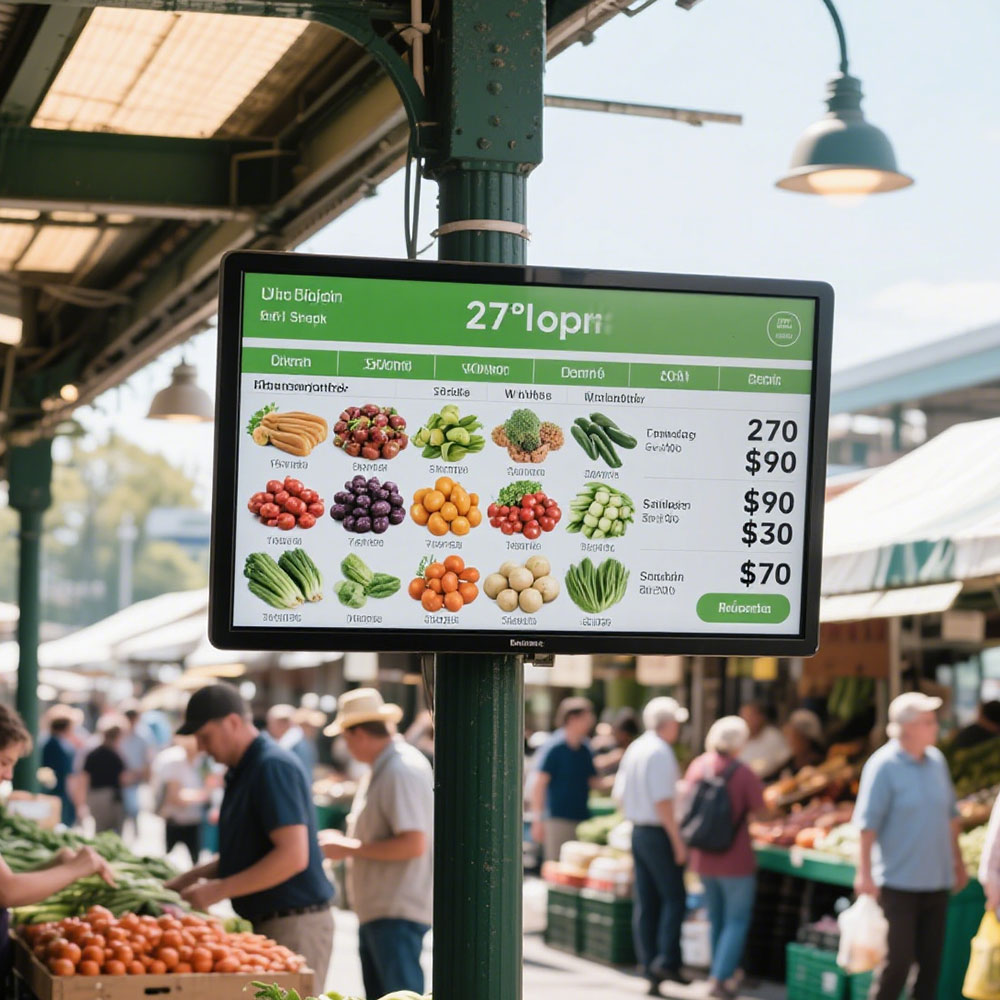Outdoor LCD screens are essential for digital signage in environments such as retail stores, transportation hubs, stadiums, and public spaces. Unlike indoor displays, outdoor units must withstand extreme weather conditions—ranging from intense sunlight to heavy rain, high humidity, and temperature fluctuations—while maintaining image clarity and operational reliability. Choosing the right outdoor LCD screen is not just about brightness; it requires a comprehensive understanding of display technologies, environmental ratings, power efficiency, and long-term maintenance costs.
The introduction begins with the core challenge: visibility under direct sunlight. Standard indoor LCDs typically offer 250–400 nits of brightness, which is insufficient for daytime use outdoors. For optimal performance, an outdoor LCD should deliver at least 1000 nits, and ideally 3000 nits or more for high-sunlight areas like deserts or coastal regions. This level of brightness ensures content remains legible even under harsh lighting conditions—a key factor often overlooked during procurement.

The main body dives into critical technical specifications. First, consider IP (Ingress Protection) rating: an IP65 or higher is necessary to resist dust ingress and water splashes from any direction. Second, look for wide viewing angles—preferably 178° horizontally and vertically—to ensure readability from multiple positions, especially in crowded public areas. Third, evaluate the panel type: IPS (In-Plane Switching) panels offer superior color accuracy and consistency compared to TN or VA panels, making them ideal for advertising and information displays.
Another crucial aspect is thermal management. Outdoor LCDs generate heat, and without proper ventilation or cooling systems, internal components can degrade rapidly. Professional-grade models often include passive cooling designs using aluminum heatsinks or active fans with dust filters. Additionally, check for automatic brightness adjustment based on ambient light sensors—this feature improves energy efficiency and extends screen lifespan by reducing unnecessary power consumption during low-light periods.
Durability also involves materials and build quality. Aluminum frames are preferred over plastic for structural integrity and better heat dissipation. Some manufacturers incorporate anti-glare coatings and UV-resistant front glass to prevent yellowing and surface damage over time. These features significantly reduce long-term maintenance needs—a major cost driver in commercial deployments.
Case studies from real-world installations support these recommendations. For example, a transit authority in Dubai installed 500-nit outdoor displays with IP65 protection and IPS panels across bus stops. Despite daily exposure to 45°C temperatures and sandstorms, the screens maintained 98% uptime over three years, thanks to robust engineering and regular cleaning protocols. Similarly, a European shopping mall replaced aging LED signs with 3000-nit LCDs featuring automatic dimming—resulting in a 40% reduction in electricity bills and improved customer engagement.
Finally, the conclusion emphasizes that selecting an outdoor LCD isn’t just about initial cost—it’s an investment in performance, longevity, and ROI. Prioritize brightness, environmental resilience, and smart features like adaptive lighting. Always request test reports from vendors, including Luminance Uniformity, Color Gamut, and Thermal Cycling data. By aligning technical specs with your specific environment—whether urban, industrial, or coastal—you ensure maximum value from your outdoor display solution.







